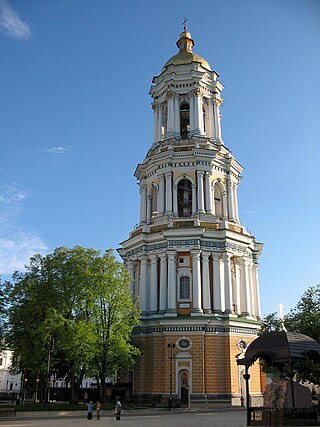This article needs additional citations for verification .(December 2009) |
| |||
|---|---|---|---|
| Buildings and structures +... |
This is a list of events related to architecture in 1745.
This article needs additional citations for verification .(December 2009) |
| |||
|---|---|---|---|
| Buildings and structures +... |
This is a list of events related to architecture in 1745.


Baroque architecture is a highly decorative and theatrical style which appeared in Italy in the early 17th century and gradually spread across Europe. It was originally introduced by the Catholic Church, particularly by the Jesuits, as a means to combat the Reformation and the Protestant church with a new architecture that inspired surprise and awe. It reached its peak in the High Baroque (1625–1675), when it was used in churches and palaces in Italy, Spain, Portugal, France, Bavaria and Austria. In the Late Baroque period (1675–1750), it reached as far as Russia, the Ottoman Empire and the Spanish and Portuguese colonies in Latin America. In about 1730, an even more elaborately decorative variant called Rococo appeared and flourished in Central Europe.

Kyiv-Pechersk Lavra or Kyievo-Pecherska Lavra, also known as the Kyiv Monastery of the Caves, is a historic Eastern Orthodox Christian monastery which gave its name to one of the city districts where it is located in Kyiv.

The year 1754 in architecture involved some significant events.

Saint Sophia Cathedral in Kyiv, Ukraine, is an architectural monument of Kievan Rus'. The former cathedral is one of the city's best known landmarks and the first heritage site in Ukraine to be inscribed on the World Heritage List along with the Kyiv Cave Monastery complex. Aside from its main building, the cathedral includes an ensemble of supporting structures such as a bell tower and the House of Metropolitan. In 2011 the historic site was reassigned from the jurisdiction of the Ministry of Regional Development of Ukraine to the Ministry of Culture of Ukraine. One of the reasons for the move was that both Saint Sophia Cathedral and Kyiv Pechersk Lavra are recognized by the UNESCO World Heritage Program as one complex, while in Ukraine the two were governed by different government entities. It is currently a museum.

Ukrainian Baroque, also known as Cossack Baroque or Mazepa Baroque, is an architectural style that was widespread in the Ukrainian lands in the 17th and 18th centuries. It was the result of a combination of local architectural traditions and European Baroque.
The year 1751 in architecture involved some significant events.

St. Michael's Golden-Domed Monastery is a monastery in Kyiv, the capital of Ukraine, dedicated to Saint Michael the Archangel. It is located on the edge of the bank of the Dnipro river, to the northeast of the St Sophia Cathedral. The site is in the historical administrative neighbourhood of Uppertown and overlooks Podil, the city's historical commercial and merchant quarter. The monastery has been the headquarters of the Orthodox Church of Ukraine since December 2018.

Ivan Grigorovich-Barsky or Ivan Hryhorovych-Barskyi was a Ukrainian-born Imperial Russian architect who worked in the Late Cossack Baroque style. He was a graduate of the Kyiv-Mohyla Academy, and designed many buildings and churches in Kyiv and elsewhere.

The Great Lavra Bell Tower or the Great Belfry is the main bell tower of the ancient cave monastery of Kyiv Pechersk Lavra in Kyiv, the capital of Ukraine. It is one of the most notable buildings of the Kyiv skyline.

The Gate Church of the Trinity is a historic church of the cave monastery of the Kyiv Pechersk Lavra in Kyiv, the capital of Ukraine. Originally being built as in the church style of Kievan Rus', the Gate Church of the Trinity is now decorated in the Ukrainian Baroque style, having been reconstructed many times through its history.
The year 1709 in architecture involved some significant events.
The year 1707 in architecture involved some significant events.

The Mannheim Jesuit Church is a Catholic church of historic and artistic importance in Mannheim, Germany. Church construction was begun in 1733 and completed in 1760. It was consecrated to St. Ignatius of Loyola and St. Francis Xavier. During the Second World War, the church suffered severe damage from air attacks; after the war it was rebuilt in its historical style using original parts.

Johann Gottfried Schädel was a German Baroque architect who worked in Russia and Ukraine.

The Bell Tower of Saint Sophia Cathedral in Kyiv is a monument of Ukrainian architecture in the style of Ukrainian (Cossack) Baroque. It is one of the Ukrainian national symbols and symbols of the city of Kyiv.

Stepan Demyanovich Kovnir, was a Ukrainian builder and master mason in Kyiv. His nearly sixty years of labor brought aesthetic unity to the ancient, sprawling center of Ukrainian culture and education, the Kyiv Pechersk Lavra, which is now a UNESCO World Heritage Site. A serf without any formal education, he became an early master of Ukrainian baroque architecture as well as organizing a school for masons.